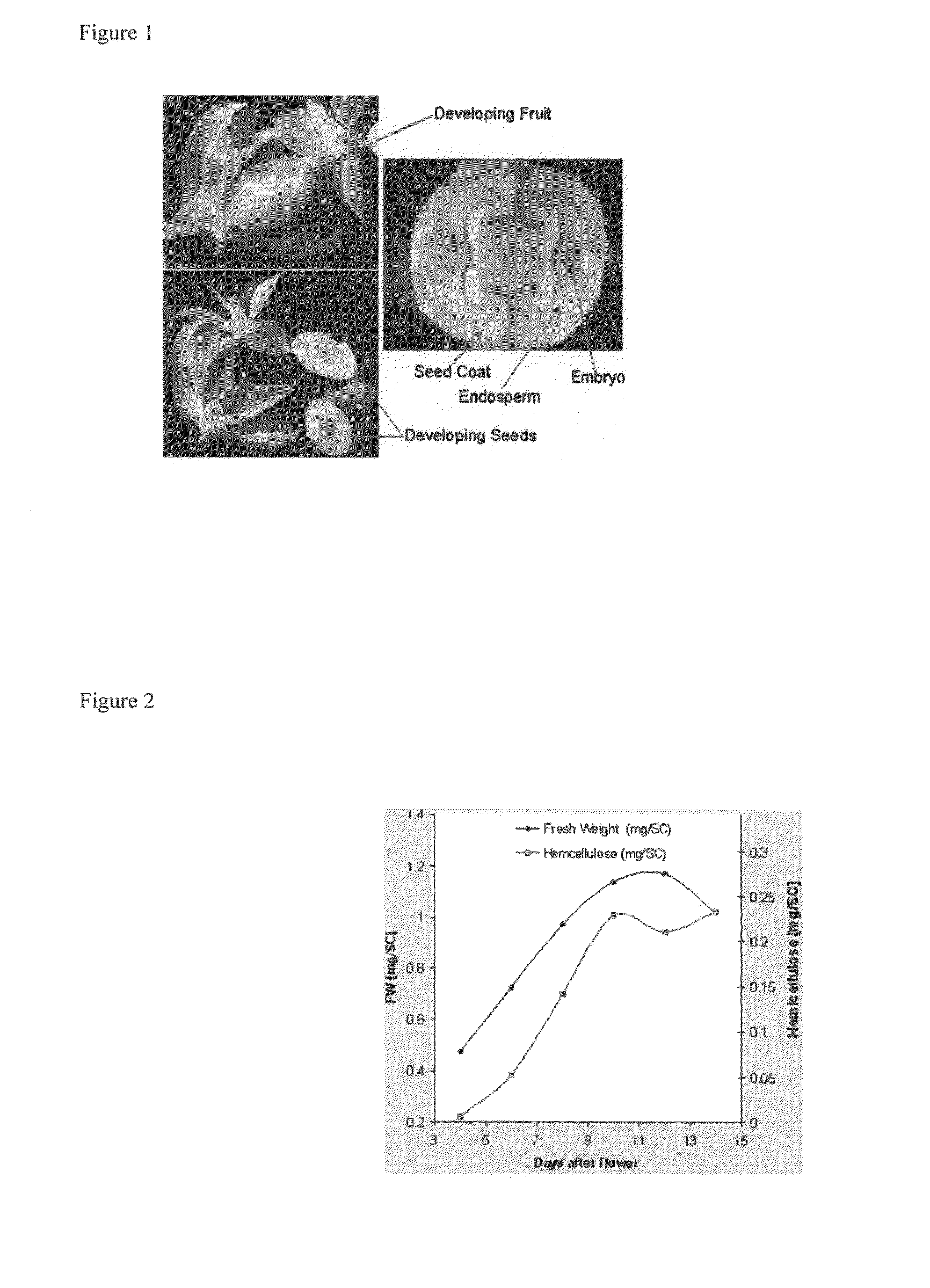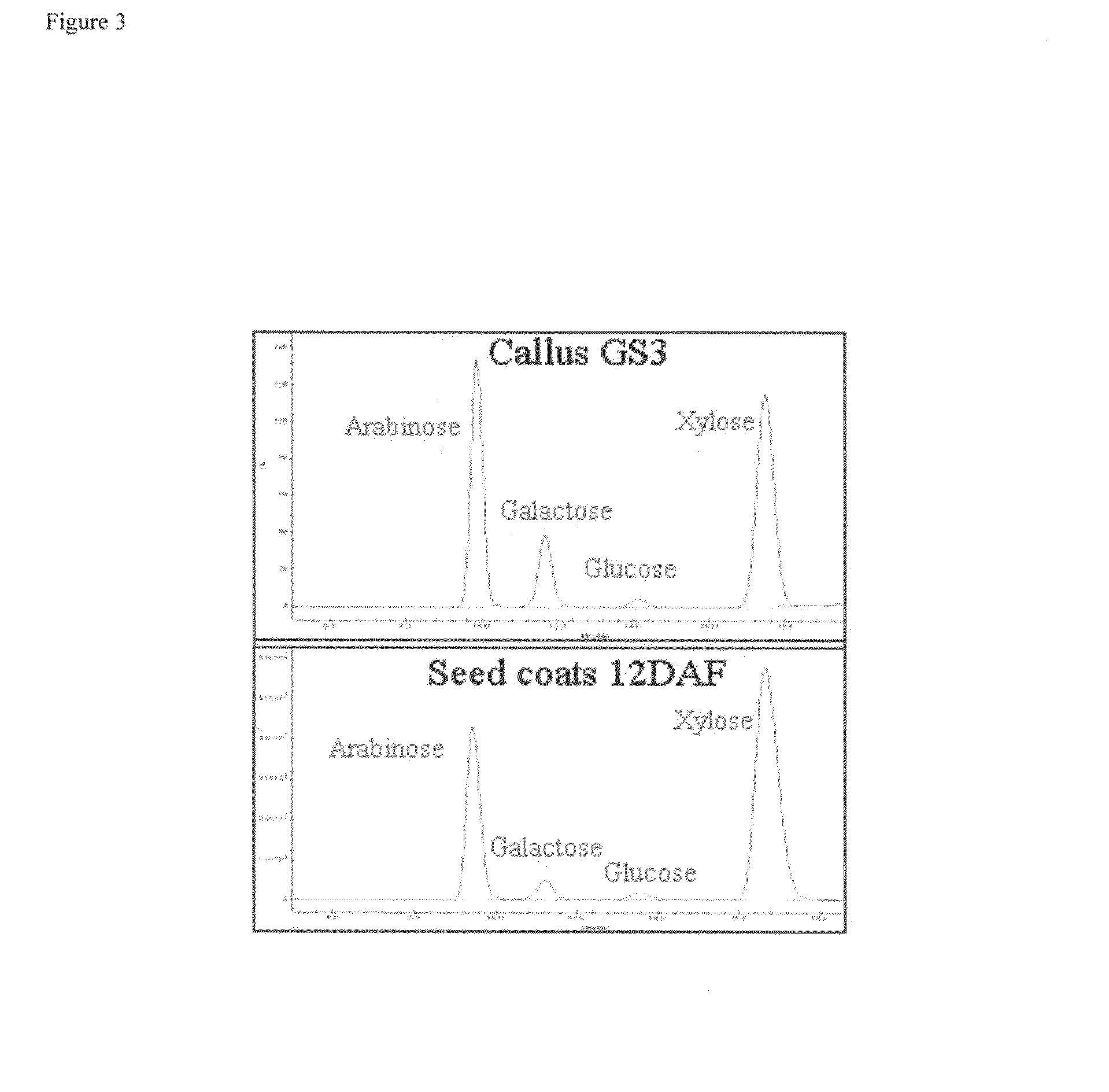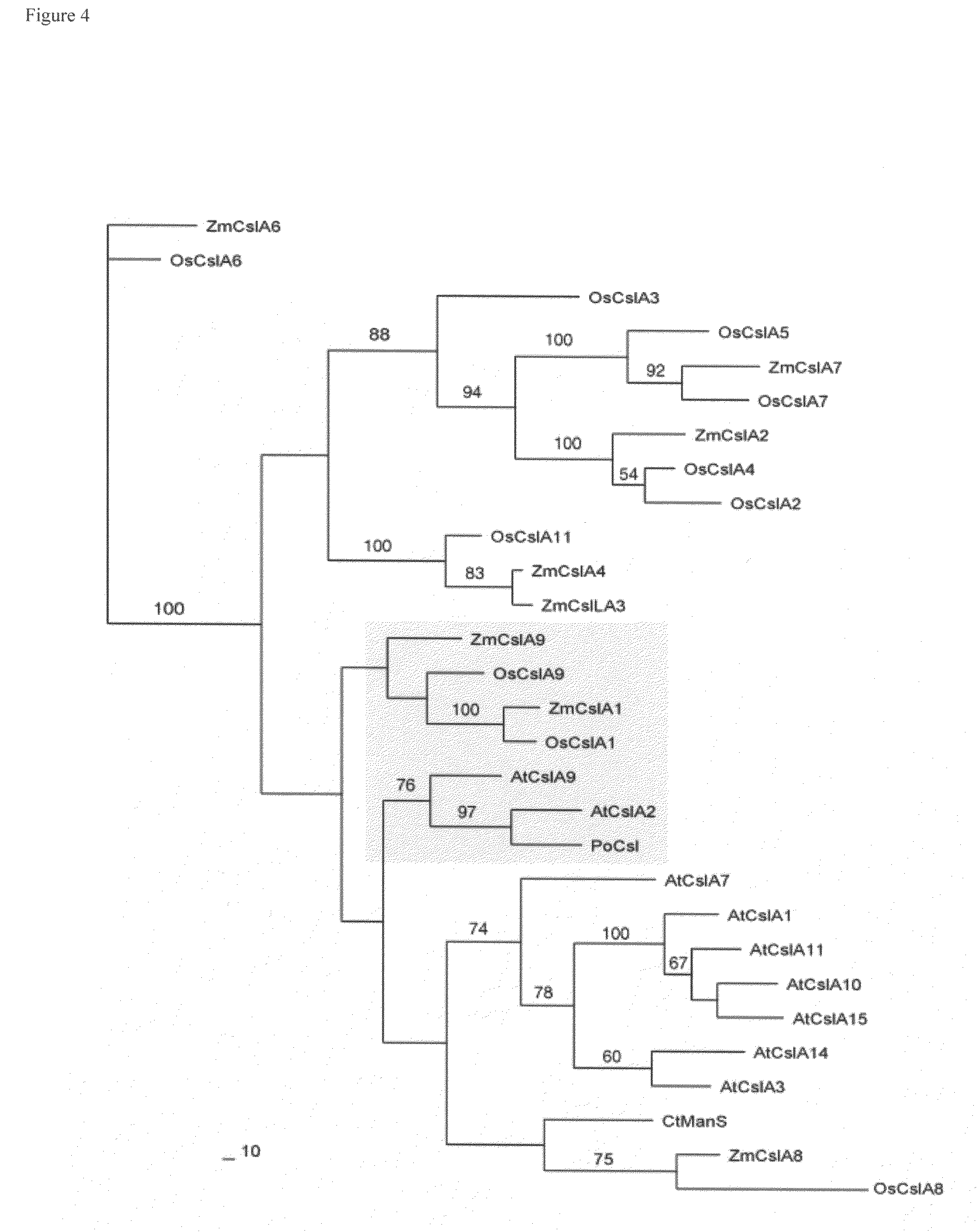Modulation of plant xylan synthases
- Summary
- Abstract
- Description
- Claims
- Application Information
AI Technical Summary
Benefits of technology
Problems solved by technology
Method used
Image
Examples
example 1
Plant Xylan Synthase and their Uses
[0296]Availability of the complete genome sequences of Arabidopsis and rice, made it possible to isolate all the members of the cellulose synthase super gene family (Richmond and Somerville 2000; Hazen et al. 2002), which was accomplished through searching for homologous genes to a cellulose synthase gene that had previously been isolated from cotton (Pear et al. 1996). Proof for the involvement of any of these genes in β-glycan formation was obtained when a cellulose synthase-like (Csl) gene from guar that made β-mannan was functionally expressed in a heterologous system (Dhugga et al. 2004; Liepman et al. 2005). An alternative approach was used by Burton et al. (2006) to identify mixed-linked glucan (MLG) synthase genes whereby they expressed the CslF sequences in Arabidopsis (Burton et al. 2006). MLG does not occur naturally in Arabidopsis walls. Detection of MLG was by immunocytochemistry using antibodies specific to MLG in the walls of CslF-ex...
example 2
Monitoring Expression of Xylan Synthase Genes
[0325]Expression of xylan synthase may be monitored by gene or protein fusions with a polypeptide whose enzymatic activity is easily assayed such as, for example, alkaline phosphatase, beta galactosidase, chloramphenicol acetyltransferase, luciferase, green fluorescent protein, beta glucoronidase, or derivatives thereof.
[0326]Additional methods to monitor expression includes performing a methylation analysis of polysaccharides from stems of the mutant and the wild type. The concept of this test is that in xylans, the xylose residues are linked through 1,4-linkages. Thus, when the free hydroxyls of xylans are chemically methylated in vitro, followed by hydrolysis of the methylated polysaccharide to free sugars, a large proportion of the partially methylated xylose residues will have free hydroxyls on carbons 1 and 4 (since these were not susceptible to methylation before hydrolysis of the polymer).
[0327]Experimentally, bulk cell wall mater...
example 3
Functional Analyses of ATCSL Genes by Knock-Out / Knock-Down of Multiple Genes by T-DNA Mutant Isolation and / or RNAi
[0329]Multiple genes encoding CSL proteins are present in Arabidopsis genome. Some of these genes might be specific for secondary wall formation and AtCslA2 & ATCslA9 are good candidates due to their high homology to PoCSL (Pysillium CSL, FIG. 4 phylogenetic tree). For functional analyses of these genes, it is very likely that due to functional redundancy one might need to manipulate the expression of multiple CSL genes simultaneously. We propose to knock-out / down multiple CSL genes simultaneously in transgenic plants using RNAi (inverted repeats of the coding sequences or promoter sequences) or T-DNA. An example to target both AtCslA2 and A9 is described here. We analyzed the cDNA sequence of all these 2 CSLs and identified a stretch of high homology regions (FIG. 7). We amplified these regions (highlighted in green in FIG. 8) by PCR from CSLA2 and performed a multi-way...
PUM
| Property | Measurement | Unit |
|---|---|---|
| Fraction | aaaaa | aaaaa |
| Digestibility | aaaaa | aaaaa |
| Level | aaaaa | aaaaa |
Abstract
Description
Claims
Application Information
 Login to View More
Login to View More - R&D
- Intellectual Property
- Life Sciences
- Materials
- Tech Scout
- Unparalleled Data Quality
- Higher Quality Content
- 60% Fewer Hallucinations
Browse by: Latest US Patents, China's latest patents, Technical Efficacy Thesaurus, Application Domain, Technology Topic, Popular Technical Reports.
© 2025 PatSnap. All rights reserved.Legal|Privacy policy|Modern Slavery Act Transparency Statement|Sitemap|About US| Contact US: help@patsnap.com



